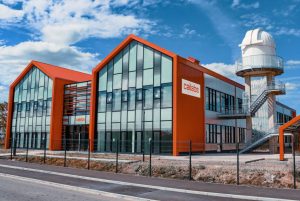Laser Induced Periodic Surface Structures generation by femtosecond laser and Multi-Plane Light Conversion beam shaping
Photonics West 2020
Authors: Clément Jacquard2, Girolamo Mincuzzi1, Marc Faucon1, Simon Nourry1, Rainer Kling1, Gwenn Pallier2, Pu Jian2, Olivier Pinel2, Guillaume Labroille2
1ALPhANOV (France)
2Cailabs (France)
Generation of nano or micro-scale structures on materials surface enables new functions and properties, such as super-hydrophobicity by lotus effect, surface blackening by light trapping, modification of surface tribological properties, etc. which are in high demand for a wide variety of industrial fields. Amongst the surface functionalization techniques, Ultra-Short Pulse lasers have been proven to be a reliable tool to create Laser Induced Periodic Surface Structures (LIPSS). Exploitation of LIPSS for industrial purposes poses some key problems like up scaling over large area with high repeatability and high throughput. Beam shaping could be a key element to overcome these issues. Specific shapes, such as top-hat line shape, could enable at once uniform processing over large surface with the consequence to reduce the processing time.
Multi-Plane Light Conversion (MPLC) is an innovative technique of beam shaping which allows theoretically lossless complex beam shapes with a high control over amplitude and phase. The free-space reflective design allows for high beam shaping quality whilst maintaining the ultra-short property of the laser pulses, which is not usually achievable through other beam shaping methods. Here we show the results obtained over Stainless-Steel using an industrial femtosecond laser with a tophat line of 30μm × 594 μm intensity profile generated using MPLC technology. The beam has been delivered over the Stainless-Steel surface with a galvo scanner and focused through an f -theta lens of 100 mm. Surface morphology has been investigated via SEM and the processing time has been compared to conventional round Gaussian Beams.
